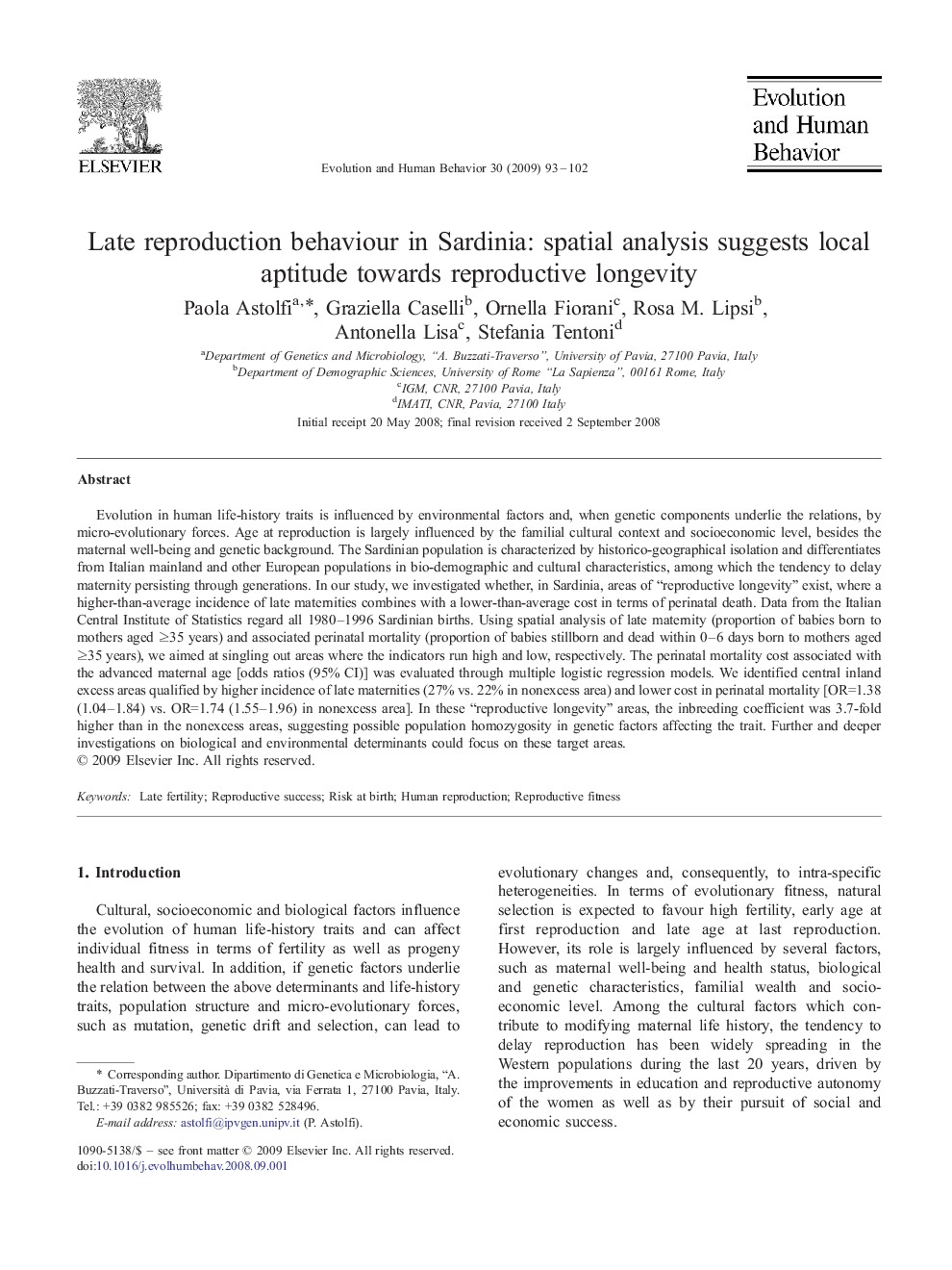| کد مقاله | کد نشریه | سال انتشار | مقاله انگلیسی | نسخه تمام متن |
|---|---|---|---|---|
| 943549 | 925482 | 2009 | 10 صفحه PDF | دانلود رایگان |

Evolution in human life-history traits is influenced by environmental factors and, when genetic components underlie the relations, by micro-evolutionary forces. Age at reproduction is largely influenced by the familial cultural context and socioeconomic level, besides the maternal well-being and genetic background. The Sardinian population is characterized by historico-geographical isolation and differentiates from Italian mainland and other European populations in bio-demographic and cultural characteristics, among which the tendency to delay maternity persisting through generations. In our study, we investigated whether, in Sardinia, areas of “reproductive longevity” exist, where a higher-than-average incidence of late maternities combines with a lower-than-average cost in terms of perinatal death. Data from the Italian Central Institute of Statistics regard all 1980–1996 Sardinian births. Using spatial analysis of late maternity (proportion of babies born to mothers aged ≥35 years) and associated perinatal mortality (proportion of babies stillborn and dead within 0–6 days born to mothers aged ≥35 years), we aimed at singling out areas where the indicators run high and low, respectively. The perinatal mortality cost associated with the advanced maternal age [odds ratios (95% CI)] was evaluated through multiple logistic regression models. We identified central inland excess areas qualified by higher incidence of late maternities (27% vs. 22% in nonexcess area) and lower cost in perinatal mortality [OR=1.38 (1.04–1.84) vs. OR=1.74 (1.55–1.96) in nonexcess area]. In these “reproductive longevity” areas, the inbreeding coefficient was 3.7-fold higher than in the nonexcess areas, suggesting possible population homozygosity in genetic factors affecting the trait. Further and deeper investigations on biological and environmental determinants could focus on these target areas.
Journal: Evolution and Human Behavior - Volume 30, Issue 2, March 2009, Pages 93–102